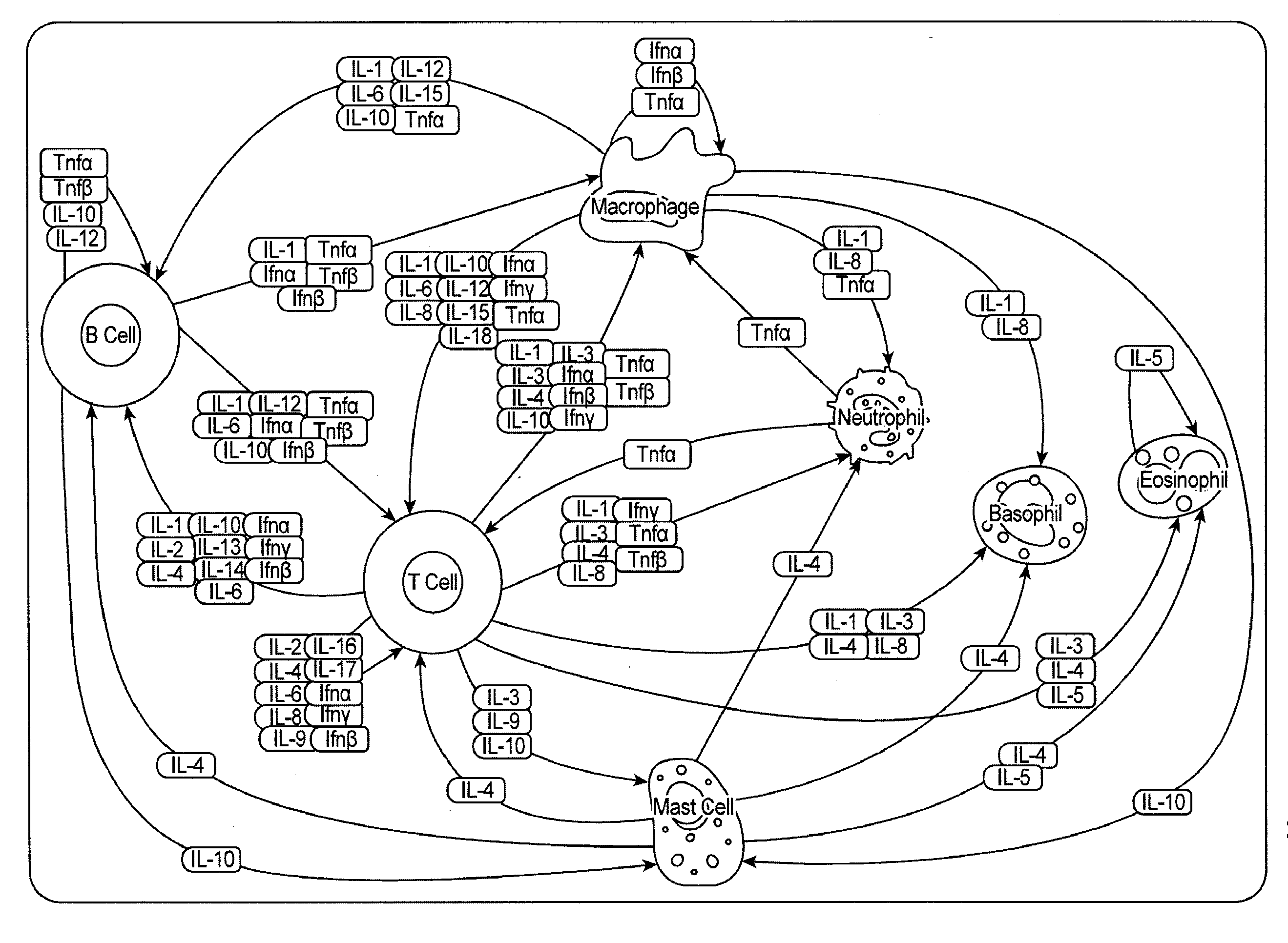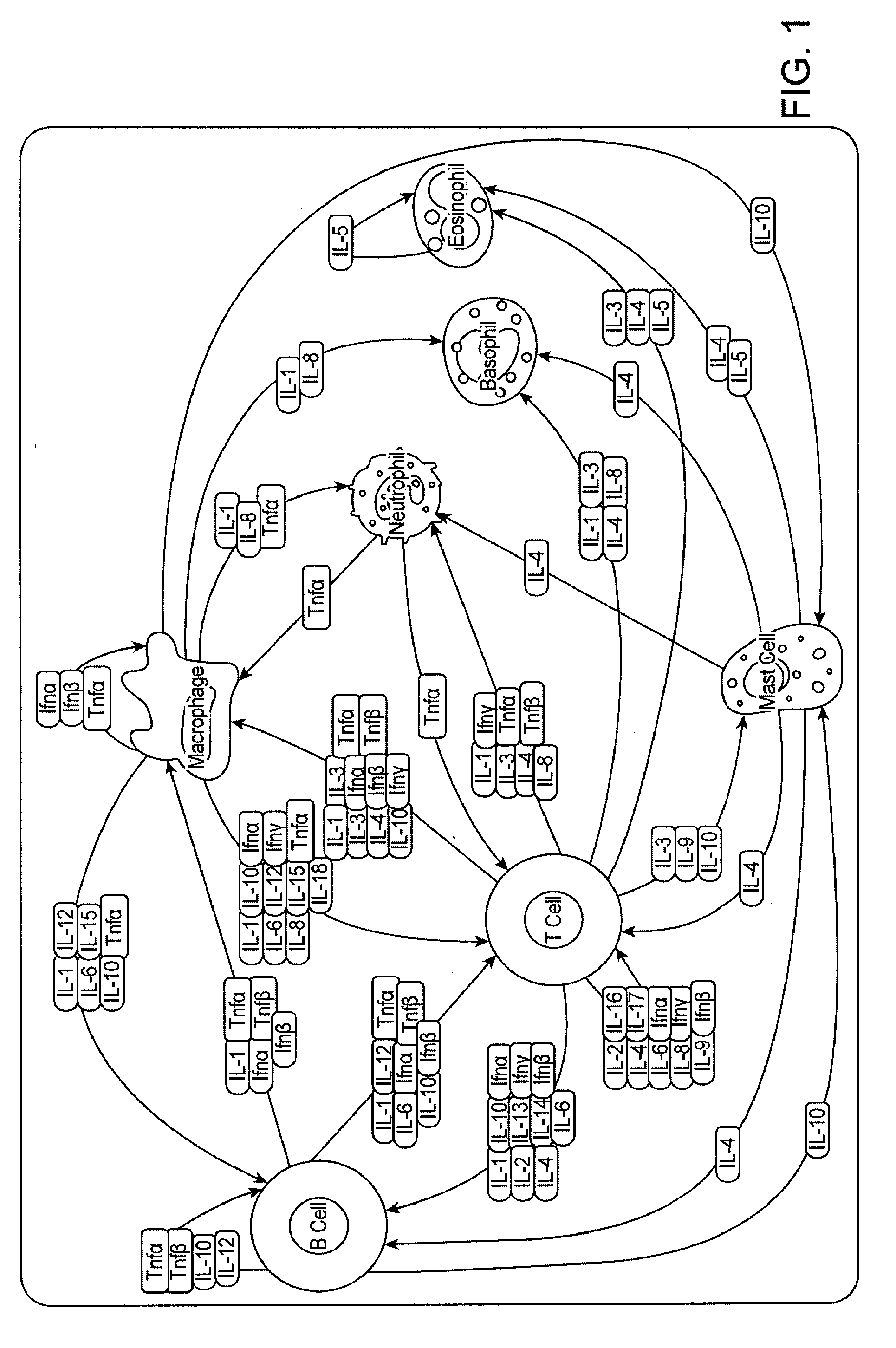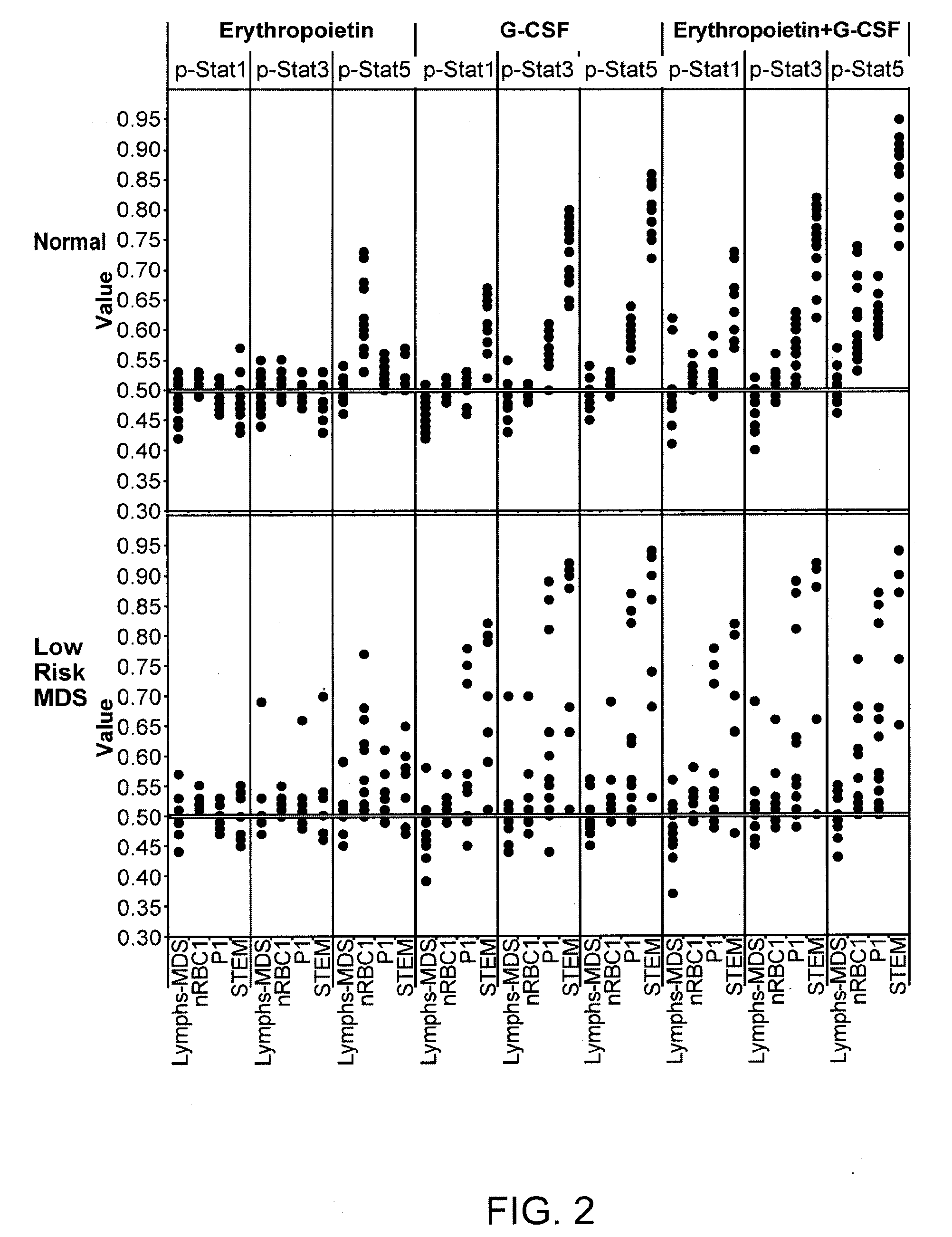Analysis of cell networks
a cell network and network analysis technology, applied in the field of cell network analysis, can solve the problems of difficult to determine the biological significance of discrete cell populations such as those of cancer cells, uncontrolled proliferation of cancer cells, and worsening of the pathology of cancer
- Summary
- Abstract
- Description
- Claims
- Application Information
AI Technical Summary
Benefits of technology
Problems solved by technology
Method used
Image
Examples
example 1
Analysis of AML Patients
[0260]Patient samples: Sets of fresh or cryopreserved samples from patients can be analyzed. The sets can consist of peripheral blood mononuclear cell (PBMC) samples or bone marrow mononuclear cell (BMMC) samples derived from the blood of AML patients. All patients will be asked for consent for the collection and use of their samples for institutional review board (IRB)-approved research purposes. All clinical data is de-identified in compliance with Health Insurance Portability and Accountability Act (HIPAA) regulations. Sample inclusion criteria can require collection at a time point prior to initiation of induction chemotherapy, AML classification by the French-American-British (FAB) criteria as M0 through M7 (excluding M3), and availability of appropriate clinical annotations (e.g., disease response after one or two cycles of induction chemotherapy). Induction chemotherapy can consist of at least one cycle of standard cytarabine-based induction therapy (i...
example 2
Analysis of Rheumatoid Arthritis patients
[0283]Patient samples: Sets of fresh or cryopreserved samples from patients can be analyzed. The sets can consist of cells samples derived from the lymph nodes, synovium and / or synovial fluid of rheumatoid patients. All patients will be asked for consent for the collection and use of their samples for institutional review board (IRB)-approved research purposes. All clinical data is de-identified in compliance with Health Insurance Portability and Accountability Act (HIPAA) regulations.
[0284]Sample inclusion criteria can include: (i) A diagnosis of rheumatoid arthritis by the 1987 ACR criteria, (ii) Definite bony erosions, (iii) Age of disease onset greater than 18 years. (iv) Patient does not have psoriasis, inflammatory bowel disease, or systemic lupus erythematosus.
[0285]Standard clinical and laboratory criteria can be used for defining RA patients that are able to respond to a treatment in the patient samples. RA samples obtained from pati...
example 3
Cellular and Intracellular Network Characterization of Cytokine JAK / STAT Signaling in Whole Blood Across Multiple Healthy Individuals: Defining “Normal”
[0288]Aberrant JAK / STAT signaling in hematopoietic cells has shown to be involved in certain hematological and immune diseases; thus, the regulation of JAK / STAT signaling is an important research area. Signaling pathway- and cell type-specific responses to various cytokines in the immune system signaling network can elicit a wide range of biological outcomes due to the combinatorial use of a limited set of kinases and STAT proteins. Although advances have been made in uncovering the intracellular mechanisms relating to cytokine signaling, the biological outcome may vary depending on composition and activation state of the cellular network. Single Cell Network Profiling (SCNP) by flow cytometry allows the interrogation of intracellular signaling networks within a heterogeneous cellular network, such as in unfractionated whole blood. W...
PUM
| Property | Measurement | Unit |
|---|---|---|
| Fraction | aaaaa | aaaaa |
| Density | aaaaa | aaaaa |
| Density | aaaaa | aaaaa |
Abstract
Description
Claims
Application Information
 Login to View More
Login to View More - R&D
- Intellectual Property
- Life Sciences
- Materials
- Tech Scout
- Unparalleled Data Quality
- Higher Quality Content
- 60% Fewer Hallucinations
Browse by: Latest US Patents, China's latest patents, Technical Efficacy Thesaurus, Application Domain, Technology Topic, Popular Technical Reports.
© 2025 PatSnap. All rights reserved.Legal|Privacy policy|Modern Slavery Act Transparency Statement|Sitemap|About US| Contact US: help@patsnap.com



